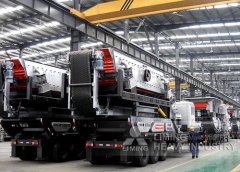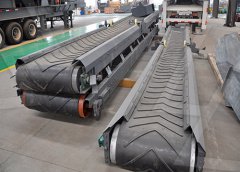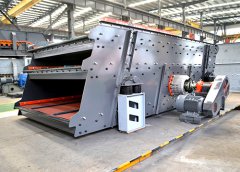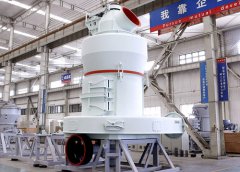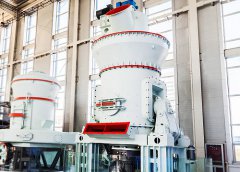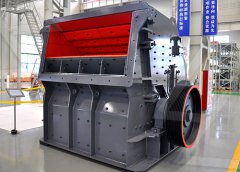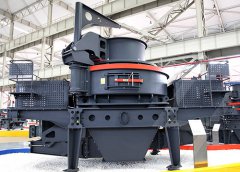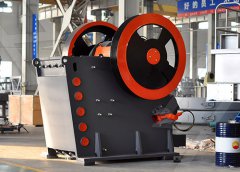
Modernizing cement manufacturing in China leads to
To further explore how cement production and CMTs affect regional environmental impacts, we take the leading cement production provinces Sichuan (SC) Abstract. This paper reviews the impact of cement industry towards the global environment and solutions to the problem. The increasing harvesting of raw Environmental impact of cement production and Solutions:
احصل على السعر
Cement Plant an overview ScienceDirect Topics
96 行1 Introduction Cement plants, steel mills and refineries are responsible for a significant share of carbon dioxide (CO2) emissions ( EEA, 2020 ), which are among the Cement Extraction, Processing, Manufacturing: Raw materials employed in the manufacture of cement are extracted by quarrying in the case of hard rocks such as Cement Extraction, Processing, Manufacturing Britannica
احصل على السعر
The cement plant of tomorrow ScienceDirect
cement production Carbon capture CO2 1. Introduction In decarbonising its value chain, the cement and concrete sector is going through its biggest transformation Ben Caldecott Scientific Data 10, Article number: 696 ( 2023 ) Cite this article 1916 Accesses 8 Altmetric Metrics Abstract Cement producers and their investors Global database of cement production assets and upstream
احصل على السعر
Digitization and the future of the cement plant McKinsey
The cement industry is being hit hard by the COVID-19 pandemic, with global demand for cement expected to decline by 7 to 8 percent in 2020—though these Global cement production in 2018 was approximately 3.99 billion tons, with the cement production volume contraction 2.7% compared to 2017 due to slower growth Production of cement and its environmental impact
احصل على السعر
Carbon Capture in the Cement Industry: Technologies,
For cement production, the pilot plant in Brevik, Norway is the most developed, and with a flue-gas flow rate of approximately 125 L/s its TRL is 5–6. We are not aware of any plans The first one (S1) is the extraction and preparation of the raw materials in the quarry. The second process (S2) is the production of clinker at the cement plant. The third process (S3) is the production of the cement, which includes the grinding of clinker and its mixing with gypsum: France: Chen et al. (2010)Production of cement and its environmental impact
احصل على السعر
Cement Production an overview ScienceDirect Topics
Production Planning Using Day-Ahead Prices in a Cement Plant. Turgay Emir, Mehmet Güray Güler, in Exergetic, Energetic and Environmental Dimensions, 2018. Abstract. Cement production is an energy-intensive process. The cost of energy constitutes more than 60% of the cost of the cement; hence cement plants have to consider minimizing the cost The cement industry is highly energy-intensive, consuming approximately 7% of global industrial energy consumption each year. Improving production technology is a good strategy to reduce the energy Technological Energy Efficiency Improvements in
احصل على السعر
Optimization of the Clinker Production Phase in a Cement Plant
An APC system in a clinker production unit of a cement plant must lead to productivity and efficiency increase, while assuring the desired quality of byproducts; in addition, pollution impact should be kept within given limits and fuel specific consumption should be minimized. In a cement rotary kiln, the main thermodynamical constraints According to the data we know, the total cost of a cement plant is estimated to be US$ 17,000 to US$ 20,000 per ton. One thing to be clear, this is just an estimation, in the real cement plant building, the cement factory cost is affected by various factors, including the significant difference in the cost of land, availability of limestoneHow Much Does It Cost To Start A Cement Plant?
احصل على السعر
Production of concrete using reclaimed water from a ready-mix concrete
Concrete production in this factory will have a great impact on air pollution and reduction of water resources in the region. The amount of concrete produced by the mentioned plant is about 800 m 3 per day. Considering about 300 working days, the annual concrete production in this factory will be 240,000 m 3.6 steps of the cement manufacturing process. When we talked about the manufacturing of cement, anyone who knows the cement manufacturing process slightly will mention “two grinding and one calcination”, they are namely: cement raw material preparation, clinker production, and cement grinding. In the real cement production line, Cement Manufacturing Process: 6 StepsTo Make Cement AGICO Cement Plant
احصل على السعر
Life cycle assessment of a cement plant in Naypyitaw,
Cement production is very energy-intensive, requiring large amounts of f ossil fuels for the decomposition 56 of limestone to calcium oxide (Worrell et al., 2001; Wang et al., 2009; Ali et al., 2011).Machinery procured for the cement production. When discussing the costs of establishing a cement production plant, it is important to consider the costs for machinery and equipment. Modern, state-of-the-art cement production requires a variety of machines and equipment that are capable of reliably and consistently producing high-quality cement.Discover the True Costs of Starting a Cement Manufacturing Plant
احصل على السعر
Global database of cement production assets and upstream
The top five cement producing countries (China, India, Vietnam, United States and Indonesia) account for approximately 68.2% of global cement production in 2020, with China alone accounting forThe aim of this paper is to illuminate the impacts of cement production emissions on the environment. Various research work has shown that countries in sub-Saharan Africa, suffer the most from environmental Exposure effect to cement dust pollution: a mini
احصل على السعر
Cement kiln dust ScienceDirect
Cement kiln dust is included of silica and calcium carbonate which is basically like cement kiln raw materials (Salem and Salem, 2017), however, the amount of sulphate and alkali composites are higher in the CDK (Salem and Velayi, 2012).Application of this byproduct not only mitigate the pollution due to waste inside of the plant, it also Cement emissions intensity has remained relatively stable since 2018, at just under 0.6 t CO 2 per tonne of cement produced, following several years of modest increase largely due to an increasing clinker-to-cement ratio in China. To get on track with the NZE Scenario, emissions must fall by an average of 3% annually through to 2030.Cement IEA International Energy Agency
احصل على السعر
LCA and negative emission potential of retrofitted cement plants
The biomass value chain contribution to the total impacts in HT of cement clinker production process in plant A varies from 15 to 27% with miscanthus and only 4% to 8% from forest residues, whileThe cement manufacturing industry has played a fundamental role in global economic development, but its production is a major facilitator to anthropogenic CO2 release and solid waste generation. Nigeria has the largest cement industry in West Africa, with an aggregate capacity of 58.9 million metric tonnes (MMT) per year. The Ministry for Health Risk and Environmental Assessment of Cement Production
احصل على السعر
Cement Plant an overview ScienceDirect Topics
Figure 1. Overview of SeqHENS framework. The studied cement plant has an average annual clinker production of about 5600 t/d. The kiln line is a common dry process, and the raw material moisture is about 2-3%. The estimated drying demand for the raw material is about 300 kJ/kg clinker.92 million tons, and masonry cement production increased to an estimated 2.5 million tons. Cement was produced at 96 plants in 34 States, and at 2 plants in Puerto Rico. Texas, Missouri, California, and Florida were, in descending order of production, the four leading cement-producing States and accounted for approximately 43% of U.S. Cement USGS Publications Warehouse
احصل على السعر
Coal utilization in the cement and concrete industries
Coal has been the main stay of Portland cement production and remains so with coal providing around 90% of the energy consumed by cement plants around the world. It takes 200–450 kg of coal to produce 1 ton of cement. In 2015 the cement industry consumed around 4% of global coal production, around 330 Mt/year (Global Cement, 2016).The cement industry sector is an energy-intensive industrial sector; cement is the most widely used material for construction and modern infrastructure needs. The cement industry is one of the largest consumers of carbon-containing primary energy sources and one of the primary polluters of the environment. Energy consumption Heat Integration in a Cement Production IntechOpen
احصل على السعر
CO2 storage in cement and concrete by mineral carbonation
The production of cement is responsible for about 8% of man-made CO 2 emissions. CO 2 fixation by mineral carbonation in Ca- and Mg-rich raw materials such as cement-based concrete in various stages of its lifetime and magnesium silicate-based rocks (e.g. olivine) can provide a significant and long-lasting sink of CO 2.Carbonated material
احصل على السعر
